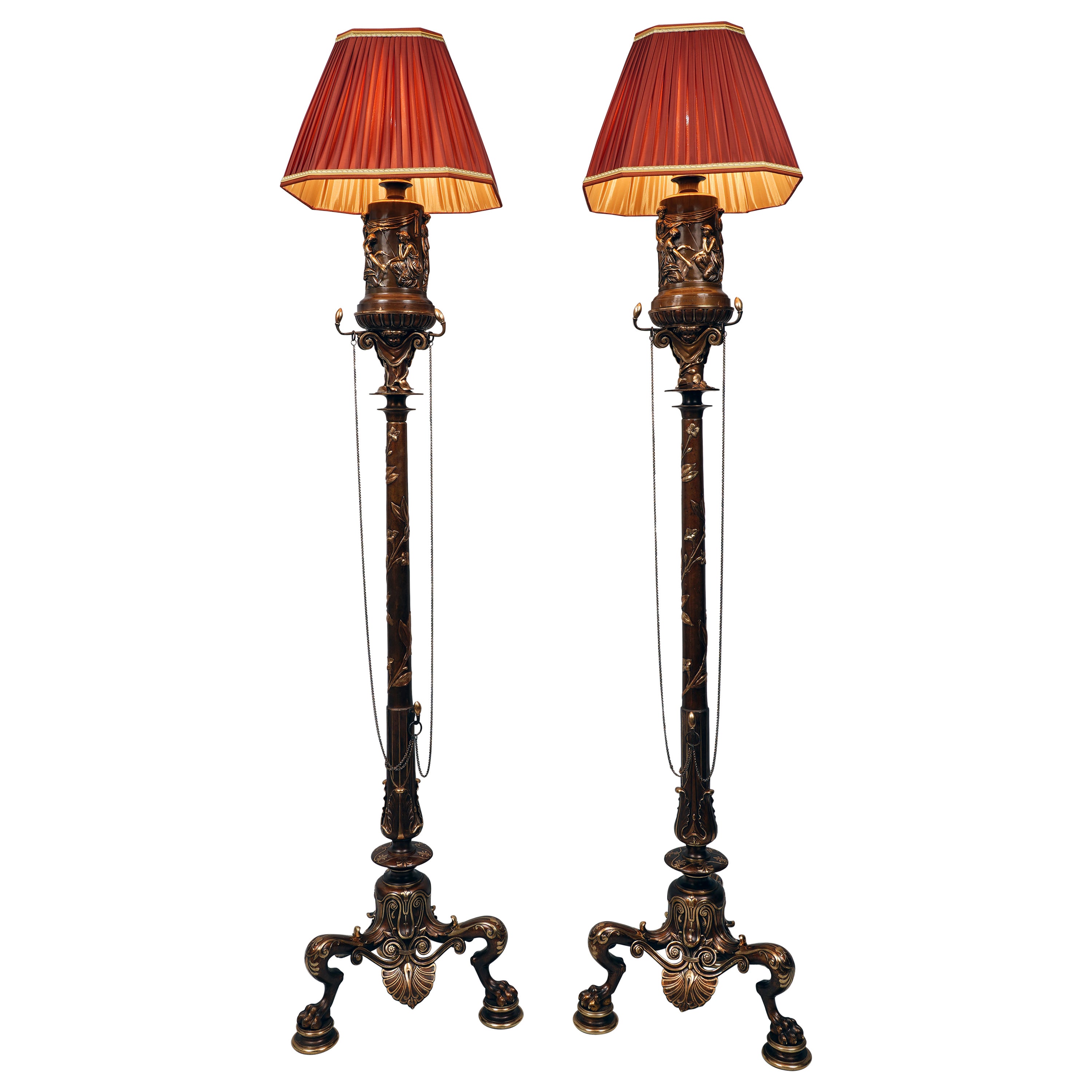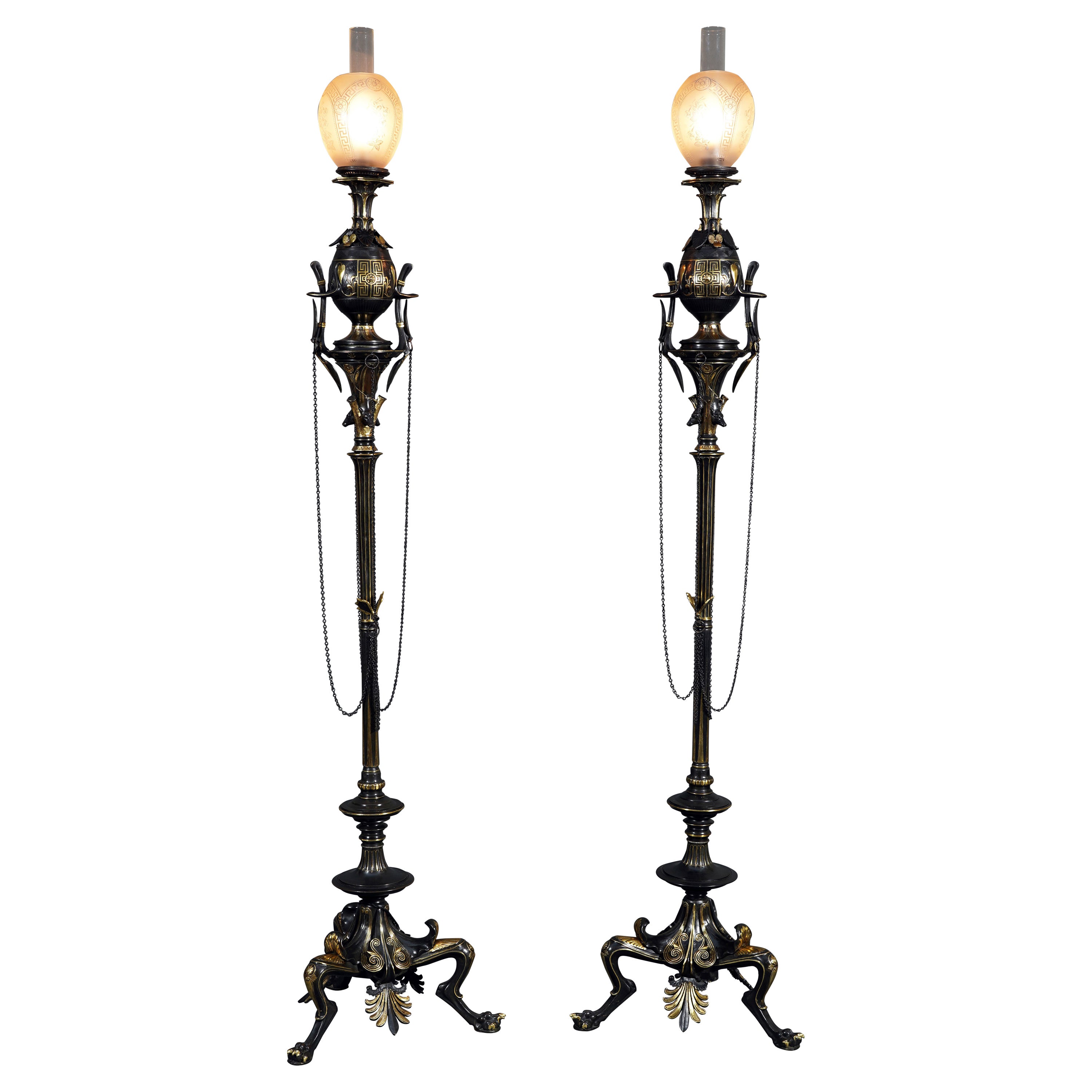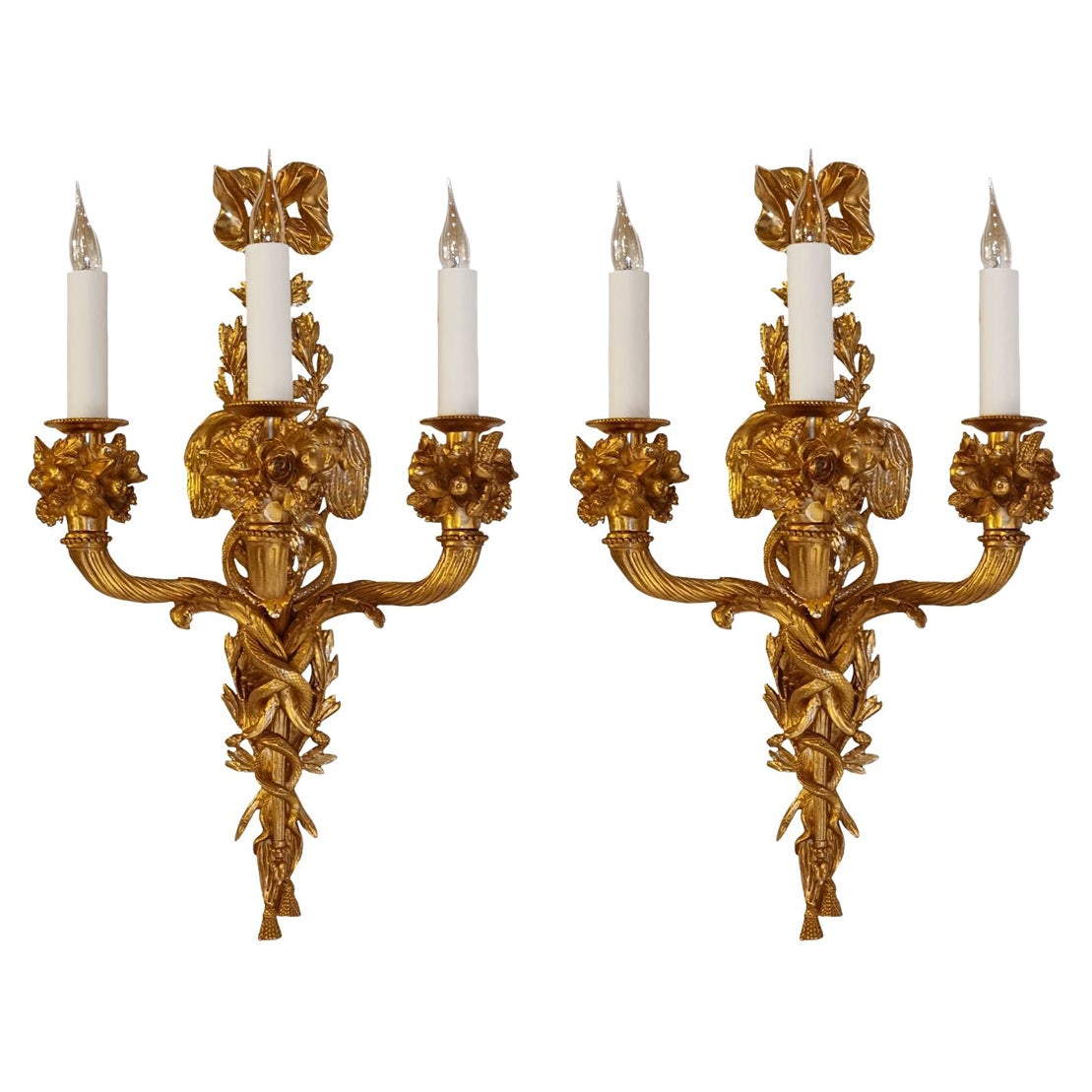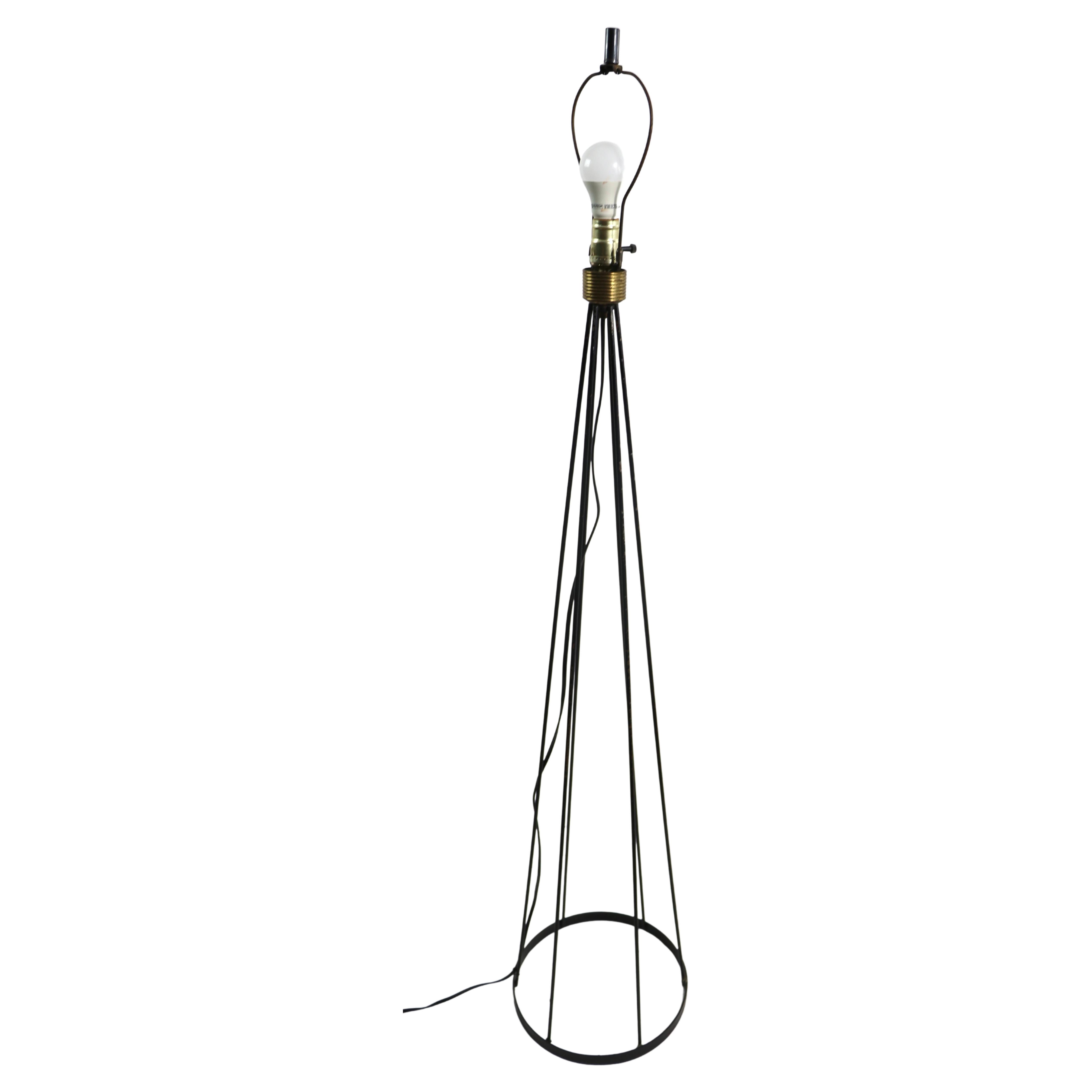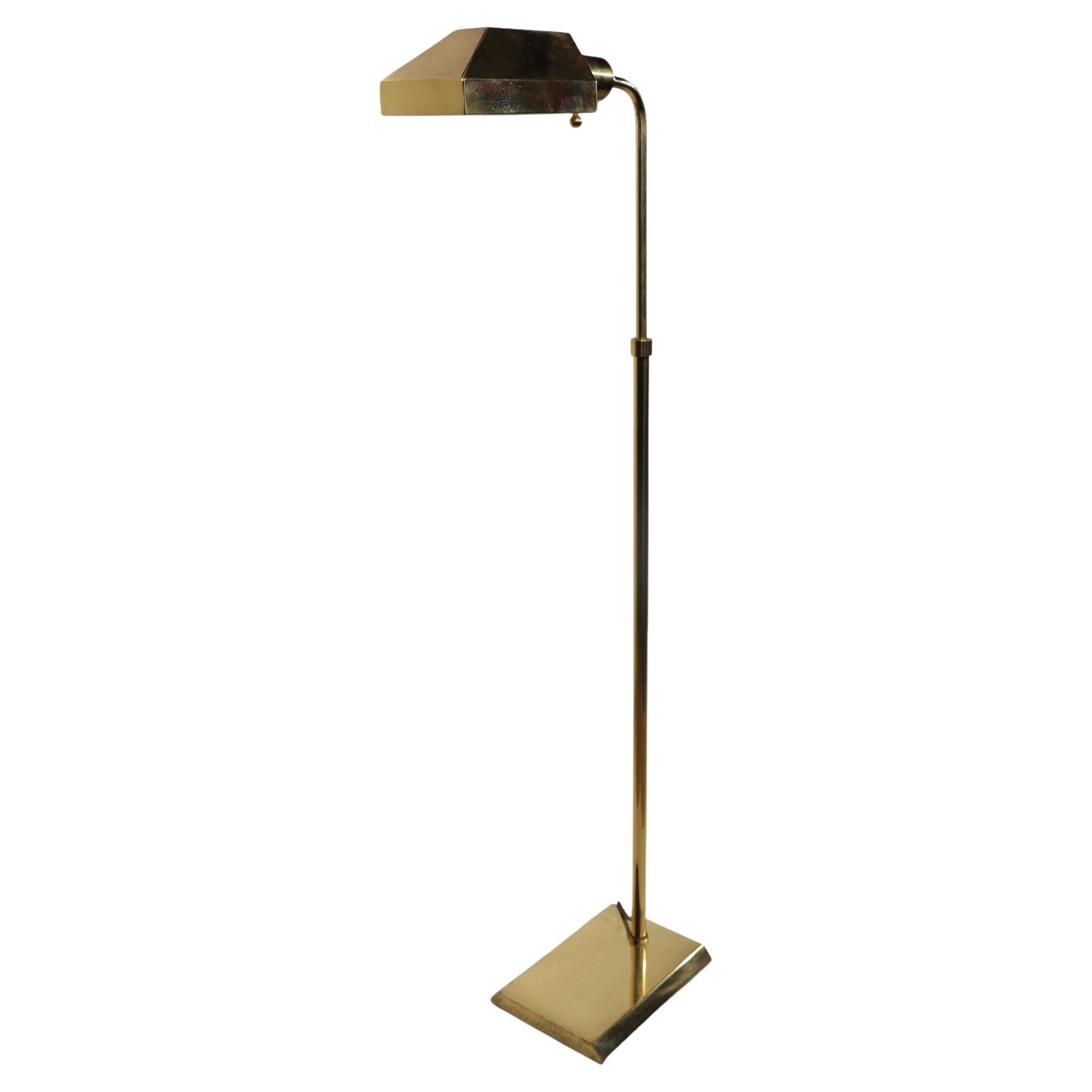Items Similar to Pair of Neo-Greek Floor Lamps Att. to Lacarrière, Delatour & Cie, France, C 1860
Want more images or videos?
Request additional images or videos from the seller
1 of 10
Pair of Neo-Greek Floor Lamps Att. to Lacarrière, Delatour & Cie, France, C 1860
About the Item
Measures : Total Height : 188,5 cm (74,2 in.) ; Base : 45 x 45 cm (17,7 x 17,7 in.)
Pedestal height : 136 cm (53,5 in.)
Lamp height : 52 cm (20,4 in.)
Beautiful pair of neo-Greek floor lamps in bronze with double patina, composed of lamps in the shape of an antique vase, decorated on the body with a rotating frieze representing a circle of dancing nymphs.
They rest on pedestals with a circular top in Griotte marble enhanced with palmettes, from which hang thin chains attached to the slender shaft decorated with stylized leaves and resting on a tripod base decorated with the heads of Bacchus alternating with large palmettes and ending in lion's paws.
The stylistic repertoire used here, composed in particular of palmettes, masks, and nymphs, evokes Greek Antiquity, as does the reuse of forms of furniture and objects such as tripods and antique vases.
The rediscovery in the 18th century of the archaeological remains of Pompeii and Herculaneum allowed artists of all disciplines to draw inspiration from Antiquity while reinterpreting it.
This trend did not fade and, in the 19th century, many personalities fitted out their interiors with neo-Greek furniture, as was the case for the Maison Pompéienne built in 1856 by the architect Alfred Normand (1822-1909) for Prince Napoleon, or Empress Eugénie who bought from the Maison Barbedienne pedestals inspired by antique tripods.
Biography :
It was at 3 bis rue Ste-Elisabeth that Lacarrière, a simple craftsman opened a workshop that was soon to specialise and to excell in the production of bronze lighting equipment. From 1834 to 1844 he was awarded several prizes. Lacarrière, Delatour & Cie after 1870 cast and carved the great majority of the lamps, candelabras and chandeliers of the Paris Opera Garnier, among which the chandelier in the concert hall, designed by Garnier himself and modeled by Corboz. At the 1878 Universal Exhibition, there was a special note in the catalogue declaring that : « their exhibition proves their Craft to be very pure and precise, their taste very sure in bronzes used for interior lighting. » Lacarrière, Delatour & Cie participated in the creation of the chandelier at the Queen’s Theatre in London. They also produced fourteen monumental candelabras for the Paris Alexandre III Bridge, which was an amazing feat at the time considering some of the pieces weighed up to 1470 pounds, and measured 14 ft. 9 in. with a diametre of 15 ft. 5 in.
.
- Attributed to:Lacarrière, Delatour and Co. (Metalworker)
- Dimensions:Height: 74.22 in (188.5 cm)Width: 17.72 in (45 cm)Depth: 17.72 in (45 cm)
- Sold As:Set of 2
- Style:Greek Revival (In the Style Of)
- Materials and Techniques:
- Place of Origin:
- Period:
- Date of Manufacture:circa 1860
- Condition:Wear consistent with age and use.
- Seller Location:PARIS, FR
- Reference Number:
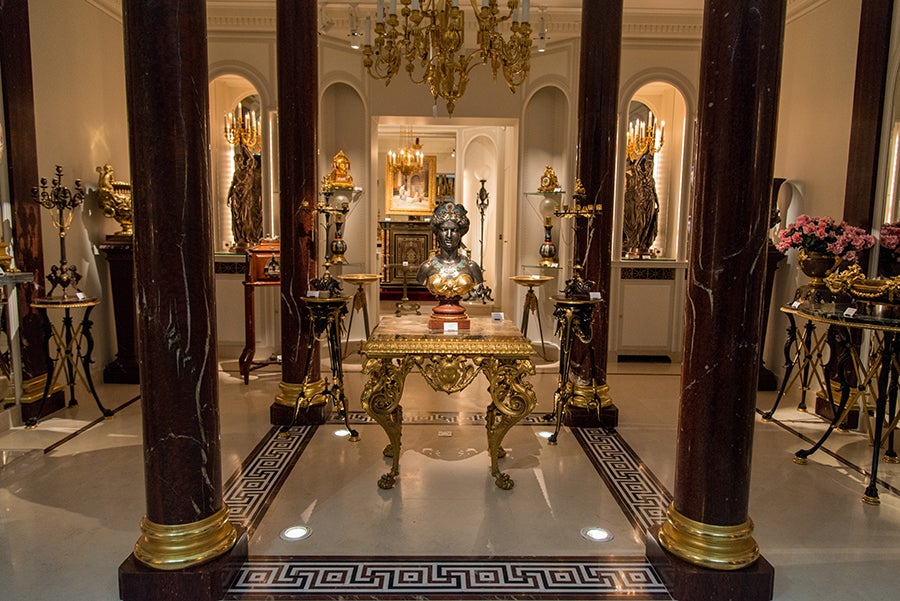
About the Seller
4.9
Vetted Seller
These experienced sellers undergo a comprehensive evaluation by our team of in-house experts.
Established in 1997
1stDibs seller since 2018
74 sales on 1stDibs
Typical response time: <1 hour
Associations
International Confederation of Art and Antique Dealers' Associations
- ShippingRetrieving quote...Ships From: PARIS, France
- Return PolicyA return for this item may be initiated within 7 days of delivery.
More From This SellerView All
- Pair of Neo-Greek Bronze Floor Lamps by F. Barbedienne, France, circa 1860By Ferdinand BarbedienneLocated in PARIS, FRHeight without/with lampshade : 168/185 cm (66,1 / 72,8 in.) ; Base : 43 x 43 cm (16,9 x 16,9 in.) Beautiful pair of neo-Greek floor lamps in bronze with double patina, composed of cylindrical lamps, decorated on the body with a rotating frieze representing women dressed in the Antique style weaving and spinning, surmounted by lampshades with cut sides in red pleated silk with golden braid. They are placed on pedestals from which hang thin chains attached to the slender shaft decorated with stylized leaves and flowers, resting on a tripod base decorated with large palmettes and ending in lion’s paws. The stylistic repertoire used here, composed in particular of palmettes, masks, and nymphs, evokes Greek Antiquity, as does the reuse of forms of furniture and objects such as tripods and antique vases. The rediscovery in the 18th century of the archaeological remains of Pompeii and Herculaneum allowed artists of all disciplines to draw inspiration from Antiquity while reinterpreting it. This trend did not fade and, in the 19th century, many personalities fitted out their interiors with neo-Greek furniture, as was the case for the Maison Pompéienne built in 1856 by the architect Alfred Normand (1822-1909) for Prince Napoleon, or Empress Eugénie who bought from the Maison Barbedienne pedestals inspired by antique tripods. Related work : Pedestal model presented by Maison Barbedienne at the Universal Exhibition in Paris in 1855. On this occasion, Empress Eugénie bought it for her bathroom in the Château de Saint-Cloud. This model pleased the Empress so much that she ordered two other pairs in 1858 for her boudoir in the palaces of Compiègne and Fontainebleau. (see photo attached) Photo showing a floor lamp similar to ours in Empress Eugénie’s bedroom in the Château de Compiègne (Oise), in Architecture intérieure et Décoration en France des...Category
Antique 1860s French Greek Revival Floor Lamps
MaterialsBronze
- Pair of Neo-Greek Floor Lamps Attributed to G. Servant, France, Circa 1870By Georges Emile Henri ServantLocated in PARIS, FRRare pair of Greek style floor lamps made in patinated bronze attributed to G. Servant, each surmounted of a frosted glass globe engraved of stars and a Greek motif frieze. The body of the vase, decorated with Greek style patterns such as palmets, Greek motif frieze and water leaves, stands on a shaft decorated with deer heads. Fine chains are connected to a delicate butterfly. The set is based on tripod legs with lion claw feet alternating large palmets. Height : 183 cm (72 in.) ; 213 cm (83 3/4 in.) with glass shades ; Diameter : 43 cm (19 2/3in.) Georges Emile Henri Servant (1828-c.1890), who took over his father in 1855 at their foundry, rue Vieille-du-Temple, in Paris, specialized in the production of neo-Egyptian style clocks, very popular in France since 1860’s, and also the making of Greek style decorative objects. He drew considerable attention to the high quality of his bronzes at the 1855 Paris Universal Exhibition and then at the 1862 London Exhibition. At this time Servant exported up to 40% of his production, principally to the United States, where for instance, his clocks were sold with great success by Louis Tiffany Inc. or Hamann & Roche of New York. But his success came really at the 1867 Paris Universal Exhibition, where he was awarded a gold medal for his neo-Greek and Egyptian works (Les Merveilles...Category
Antique 1860s French Greek Revival Floor Lamps
MaterialsBronze
- Onyx and Bronze Neo-Greek Gueridon Att. to Barbedienne and Sevin, France, c.1880By Ferdinand Barbedienne, Louis-Constant SevinLocated in PARIS, FRGueridon made in silvered and gilded bronze, composed of four claw feet decorated with lion’s head held together by crossed bars in gilded bronze. It is surmounted by a large onyx to...Category
Antique 1880s French Greek Revival Gueridon
MaterialsOnyx, Bronze
- Pair of Neo-Greek Wall-Lights Attributed to F. Barbedienne, France, Circa 1880By Ferdinand BarbedienneLocated in PARIS, FRA pair of neo-Greek wall-light sconces executed in two patina bronze attributed to F. Barbedienne. The central up-turned foliage stem, surmounted by a Greek style vase...Category
Antique 1880s French Greek Revival Wall Lights and Sconces
MaterialsBronze
- Pair of Neo-Greek Pedestals, attributed to G.Servant, France, Circa 1880By Georges Emile Henri ServantLocated in PARIS, FRPair of patinated and gilded bronze turntable pedestals with for each of them, three paw feet, headed by stylized lion muzzles, ornated with beaded chains and joined by a fine foliate stretcher. The belt is adorned by a banded frieze cast in low-relief representing an ancient scene : “The Battle of the Lapithes and the Centaurs”. These pedestals can be associated with the "Vases de Bacchus", presented by G. Servant at the 1867 Exposition Universelle, on which the similar ornamentation is applied. (Reproduced in « Merveilles de l'Exposition Universelle de 1867 », Jules Mesnard, p°167) Biography : Georges Emile Henri Servant...Category
Antique 1880s French Greek Revival Pedestals
MaterialsBronze
- Pair of Neo-Greek Gueridons Attr. to L.C Sevin & F. Barbedienne, France, c. 1880By Ferdinand Barbedienne, Louis-Constant SevinLocated in PARIS, FRPair of patinated and gilded bronze high guéridon attributed to L.C Sevin and F. Barbedienne, with for each of them, three paw feet joined by X shaped stretche...Category
Antique 1880s French Greek Revival Gueridon
MaterialsGriotte Marble, Bronze
You May Also Like
- 18th Century Pair of Wall lamp in Bronze 18K Gold from Delatour LacarriereBy Lacarrière, Delatour and Co., OMBRES ET FACETTESLocated in SAINT-OUEN-SUR-SEINE, FRThis beautiful pair of sconces is a re-edition of a model of the famous Parisian bronze maker Delatour Lacarrière. Lacarrière creates in 1825 a factory at 3 bis, rue Sainte- Elisabeth (Paris, France). Simple craftsman, he specializes and excels in the application of bronze in lighting devices. In 1834, he received an honorable mention, in 1839, a bronze medal and in 1844, a silver medal for a large triangular candelabra, prefiguring the one presented at the Universal Exhibition in London in 1862. He also participated in the design of the chandelier for the Queen's Theatre in London. From 1851 to 1870, he changed his company name several times. Lacarrière, Delatour et Cie (active in 1870) cast and chiseled most of the lamp posts, candelabras and chandeliers of the Paris Opera, including the one in the auditorium, designed by Charles Garnier...Category
Antique 18th Century French Louis XVI Wall Lights and Sconces
MaterialsGold, Bronze
- Wrought Iron Floor Lamp Att. to ThurstonBy Gerald Thurston, LightolierLocated in New York, NYClassic mid century floor lamp, constructed of wrought iron metal rods, in tapered conical form, with brass collar. Design attributed to Gerald Thurston, manufacture attributed to Li...Category
Mid-20th Century American Mid-Century Modern Floor Lamps
MaterialsWrought Iron
- Adjustable Brass Pharmacy Style Floor Lamp att. to Koch Lowey c 1970's FloorBy Koch & LowyLocated in New York, NYClassic Post Modern reinterpretation of the antique Pharmacy Lamp form, attributed Koch & Lowey circa 1970's. The lamp is constructed of solid brass, having an angular hood shade whi...Category
Mid-20th Century American Mid-Century Modern Floor Lamps
MaterialsBrass
- Monumental Pair of Ormolu Mounted Marble Floor Lamps att. E.F.CaldwellBy Sterling Bronze Co.Located in New York, NYA highly important and monumental pair of gilt bronze mounted marble and alabaster floor lamps att . E.F.Caldwell New York Date: late...Category
Antique Late 19th Century American Floor Lamps
MaterialsMarble, Bronze
- Lion Feet Bronze Neo Classical Floor Lamp Attributed to Arbus, France 1940'sBy André ArbusLocated in New York, NYRare patinated bronze lamp floor. Attributed to André Arbus. Height adjustable from 45" to 59" excluding shade. Shade for showing purposes only. ...Category
Vintage 1940s French Neoclassical Floor Lamps
MaterialsBronze
- Peter Hvidt & Olga Molgaard-nielsen (att. to) teak tripod floor lampBy Peter HvidtLocated in Saint-Ouen, FRPeter Hvidt (1916-1986) & Olga Molgaard-Nielsen (1907-1993) (in the style of) Teak tripod floor lamp with three lights and lampshade. Circa 1960Category
Vintage 1960s European Mid-Century Modern Floor Lamps
MaterialsTeak
Recently Viewed
View AllMore Ways To Browse
Greek Pair
Greek Architects
Greek Lamp
Antique Lighting Co
1880 French Lamp
French Inspired Lamps
Opera Production
Antique Marble Floor
Neo Lamp
Lion Head And Paw
Dance Floor
18th Century Pair Lamps
18th Century Pairs Of Lamps
Antique Lamp Co
Antique Lamp Chain
French Large Lamp Antique
Pair Tripod Lamp
Greek Frieze
